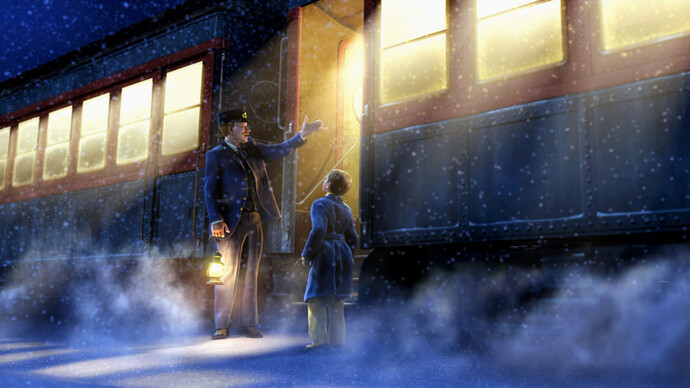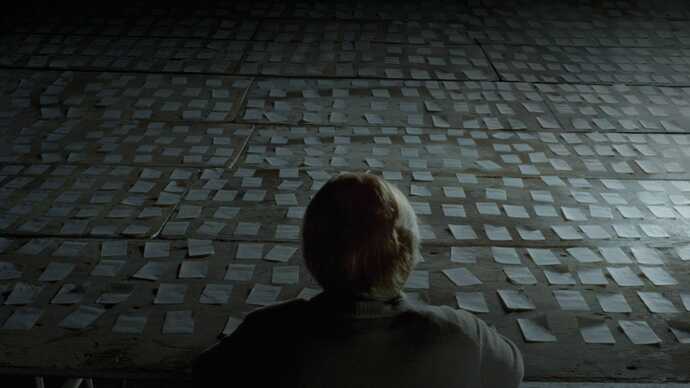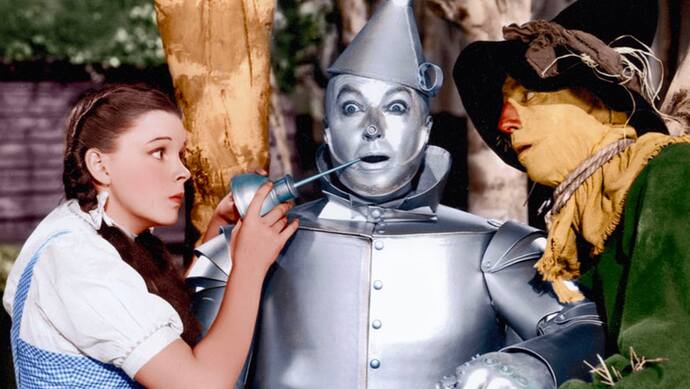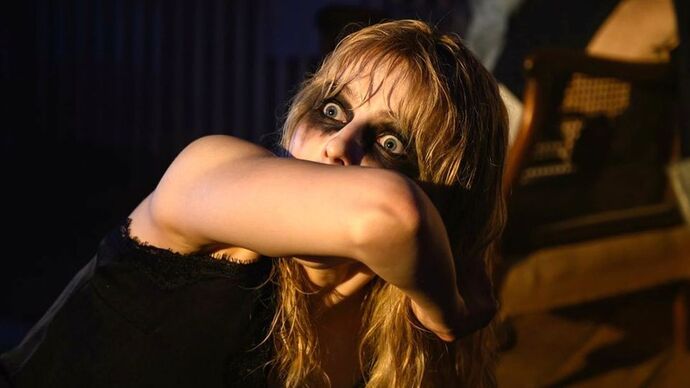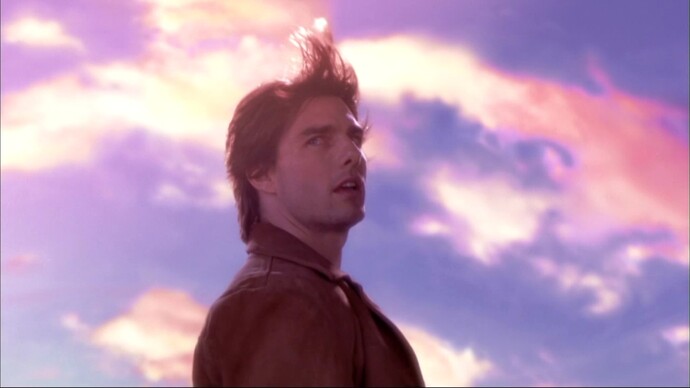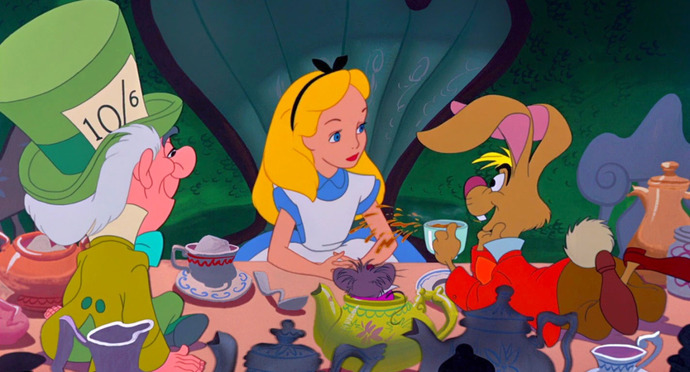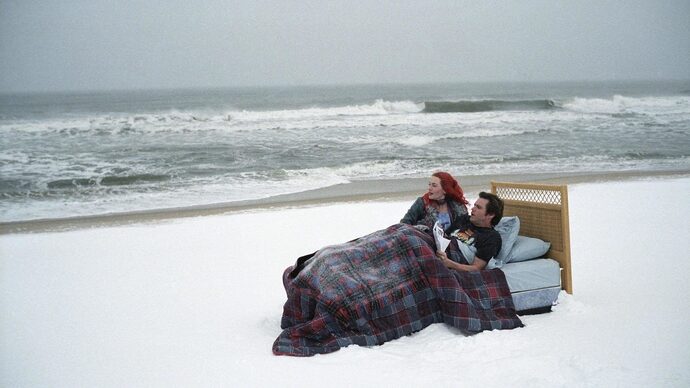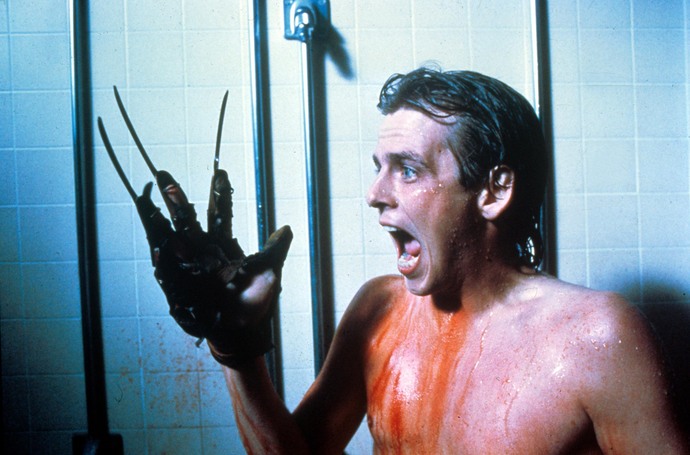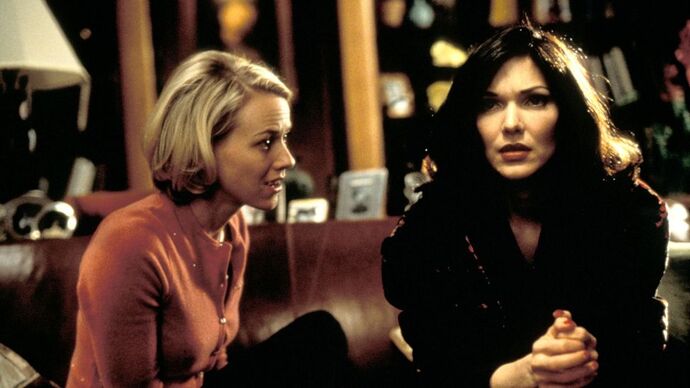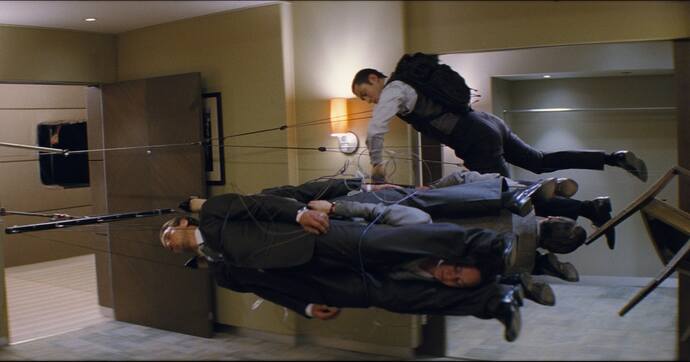Whether it’s the strange depiction of other dimensions in Christopher Nolan’s Interstellar or the zigzagging through decades in the Back to the Future trilogy, films aren’t tied down by scientific rules—and that’s most apparent when a film incorporates dream logic. Throughout cinema history, there have been all kinds of movies that seem to be realistic at first, but not all is what it is first seems. Like in our dreams, strange things can happen that defy logic and physics. Here are our picks for the best dream movies that incorporate weird dream logic or take place in fascinating dreamscapes.
10. The Polar Express (2004)
“Are you saying this is all just a…dream?” the little boy asks, riding on a magical train towards the North Pole he doesn’t quite believe in. “You said it, kid! Not me,” replies the hobo-ghost. He might as well be talking straight to us in the audience, as we continually question what’s real and what’s imagined. To say all of Robert Zemeckis’ The Polar Express is “just a dream” would be far too reductive. The self-aware narrative frequently points this out, with the conductor philosophically even stating that “sometimes, the most real things in the world are the things you can’t see.” The whimsical Christmas Eve train journey is as metaphorical as it is physical. The point of it is to sway the (unnamed) agnostic protagonist into believing that Santa Clause is real. Ironically, though, he isn’t able to see any proof until he believes it. The Polar Express could easily be read as a metaphor for believing in God, with the Holy Trinity symbolized by the conductor (as Jesus Christ), the ghost (as Holy Spirit), and Santa himself (as God). They’re all voiced by Tom Hanks, which only adds to its dreaminess.
9. Synecdoche, New York (2008)
Surrealist movies go hand-in-hand with dream logic. Pioneers of the art movement, such as Salvador Dalí, often painted their own wild visions. Charlie Kaufman’s directorial debut was a bizarre, postmodern psychological drama with a crumbling Philip Seymour Hoffman at its center—one we’re sure Dalí would approve of. Plagued by an unknown condition that’s shutting down his immune system, theater director Caden Cotard (named after Cotard’s Delusion, also called “walking corpse syndrome,” which is a mental disorder where the patient believes themself to be dead or dying) becomes a reclusive and obsessed artist who forces his wife and child to leave. Cotard’s stout commitment to realism for his elaborate new stage production means his real life and work life begin to blur. Kaufman parallels Cotard’s play to the film itself, both morphing reality and fiction together using a sort of abstract meta logic. The title itself is a play on Schenectady, New York (where the film is set) with the concept of synecdoche, which is a figure of speech where one part represents the whole of something. Though some critics dubbed the film pretentious, no one can deny its cleverly written storyline and superb acting. It’s a very strange—and often confusing—film, but it’s brilliant for anyone who likes to pick apart meanings and theories!
8. The Wizard of Oz (1939)
The Wizard of Oz takes a more literal approach to the dream narrative, but it was a studio film made in the 1930s so we can forgive that. The famously hellish production reads like a nightmare in itself, which included abused actors, agonizing costumes, and munchkin-suicide conspiracies. It took four directors to finish the movie, which quickly became a festive favorite despite its dark context. Based on the children’s novel by L. Frank Baum, The Wizard of Oz opens on a Kansas farm during the early 1900s. When a tornado sends young Dorothy’s house flying, she moves from a sepia world to a Technicolor one—and she must follow the yellow brick road back home. While in the magical land of Oz, the story unfolds like a dream with talking animals, singing munchkins, and the glittering palace of Emerald City. It quickly turns sour when the booming Wizard says he won’t grant Dorothy’s wish unless she brings him the Wicked Witch’s broomstick. Once Dorothy does make it home through the power of her ruby slippers, she wakes up back at the farm with an injured head. The same actors who appeared in Oz are by her bedside (“And you were there… and you…”), making us wonder if it really was all just a dream?
7. Last Night in Soho (2021)
Director Edgar Wright is famous for his distinctive style of filmmaking—in particular, his approach to editing. Snappy montages and whip pans make his frequent collaborations with Simon Pegg and Nick Frost stand out from the crowd of British comedy flicks. You’ve probably seen them: Shaun of the Dead, Hot Fuzz, The World’s End, etc. And given the stylish flair of this auteur filmmaker, you think every film of his would be instantly recognizable. But Last Night in Soho feels more like a Hitchcockian thriller than a Wright comedy. It’s not the first time Wright has reached into other genre, but it’s one of the few. Last Night in Soho is quite literally a nightmare come to life, dreamed by the optimistic-but-troubled fashion student Eloise (played by Thomasin McKenzie). The psychological drama takes place in modern London, the city to which Eloise moves as she pursues fashion design inspired by her favorite era: the 1960s. And, of course, Eloise can truly experience the 1960s via lucid dreams, which seems like a miracle. Whenever she falls asleep, Eloise awakens in her dreams as the beautiful singer Sandie (played by Anya Taylor-Joy). But soon her dreams begin to merge with reality, as she wakes up with love bites on her neck and even getting a makeover in Sandie’s image. And it gets even worse when her rose-tinted dreams suddenly turn dark and violent. There’s no escape as Eloise realizes they aren’t dreams at all, but memories from a life mysteriously cut short.
6. Vanilla Sky (2001)
Vanilla Sky is one of those movies that becomes a completely different experience on second watch. Once you know what’s really going on, you can spot the hints and details everywhere—the ones which were subtly hiding in the background. A remake of the 1997 Spanish film Open Your Eyes, Cameron Crowe’s daring mix of genres will surely keep you on your toes. Not only does Vanilla Sky cross genres—including sci-fi, psychological thriller, drama, crime, and romance—it also crosses realities. Cutting between two time periods, we have two Tom Cruises: first as a typical rich playboy throwing parties in his Manhattan apartment, and second as someone in a creepy mask being accused of murder. While a doctor tries to draw out the truth behind David’s crime, he recalls how he lost grip on what was real and what was hallucinated, between his memories and his dreams. We won’t spoil the plot for you here, but be prepared for some reality-bending explanations.
5. Alice in Wonderland (1951)
Author Lewis Carroll purposely chose a dream structure to tell his famous tale, guiding the reader through an illogical underworld of talking rabbits and mad hatters. Without the laws of science, caterpillars are free to smoke and potions can shrink you down to the size of a pea. Oh, and he could safely mock the stringent rules of Victorian literature. “Life… What is it but a dream?” Carroll asks in Through the Looking-Glass and What Alice Found There. For young Alice, her life really is a dream but she doesn’t realize it until her adventures are over. In the end, Carroll reveals Alice to be fast asleep—but you could already guess that. At the dawn of the 1950s, Disney turned the children’s novel into a movie. Opting for animation over their initial live-action plans, Disney brought Carroll’s eccentric dreamworld to life. Yet despite being a kids’ film, Alice in Wonderland often wanders into nightmarish territory, loved by artists of the Surrealist movement. Dalí was even commissioned to illustrate a limited-edition collection in 1969!
4. Eternal Sunshine of the Spotless Mind (2004)
Eternal Sunshine of the Spotless Mind is a film about memory—something people often get confused with their dreams. Although Michel Gondry’s romance/sci-fi doesn’t take place in a dream, it’s largely set inside Joel’s mind (played by Jim Carrey) and follows a complex dream logic. When Joel has the unexplainable urge to board a train to Montauk, he meets a blue-haired woman named Clementine (played by Kate Winslet). She’s completely different from Joel—extroverted, chatty, bold—but something about them just fits together well. As it turns out, they’ve already met before. In fact, they’ve been together for two whole years! But how do two people simply forget that they were together for two years of their life? Well, Joel rediscovers a tape recording of his own voice, which was sent to a New York City firm called Lacuna that erases your memories for you. Or, at least, part of your memories. As it turns out, when Joel and Clementine’s turbulent relationship reached a breaking point, Clementine had Joel erased from her memories—and a heartbroken Joel did the same thing, except he changed his mind partway through the procedure. Not ideal. Gondry navigates the vaults of Joel’s mind with creative flair, turning his thoughts and emotions into physical settings. The nostalgia, joy, and pain of Joel’s past is brought to life as he tries to hide Clementine in old memories that the procedure won’t be able to find.
3. A Nightmare on Elm Street (1984)
A Nightmare on Elm Street is up there with the greatest horror classics, made during a booming era for the slasher genre. Director Wes Craven—pioneer of the horror genre—used supernatural elements to fuse “the boundaries between the imaginary and real.” The first in what would become an iconic franchise, A Nightmare on Elm Street follows all the tropes of 1970s and 1980s horror: a relatively low budget, teenage victims, and an iconic villain. You probably know about Freddy Krueger and his distinctively burnt face and finger blades. But what does he actually do? Instead of hiding in your closet, this serial killer hides in your dreams. Literally. In the dream world, Freddy can unleash his violent powers on teenage victims, causing them to die in real life. However, when pulled into the real world, Freddy’s spirit is shrunk down into ordinary human mortality.
2. Mulholland Drive (2001)
What is David Lynch’s style if not dreamlike? Perhaps nightmarish. The auteur director is a known lover of transcendental meditation to get the creative juices flowing, and that has resulted in some wild movies. Crossing astral planes in a lucid-dream state means surreal narratives and dreamscapes appear to the filmmaker as if by magic. And one of Lynch’s most elaborate films? Mulholland Drive, starring Naomi Watts and Laura Harring. When an amnesiac turns up at a fresh-faced actress’ house, still optimistic about her chances in Hollywood, they put their heads together to work out a stranger’s identity. Of course, a simple answer—or even your run-of-the-mill plot twist—would be far too easy for Lynch. You’ll find plenty of forum threads trying to dissect the meaning behind Mulholland Drive and scarce definitive answers. The hypnotic, neo-noir thriller uses its overarching mystery narrative as a red herring to what’s really going on, which is… well, we’re not entirely sure. The film switches between characters, like some guy in a diner describing his nightmare to another customer, then collapsing in fear when it comes true… and never seen again. Many minor characters seem to evaporate after their brief screen time, or only briefly reappear. Yet everything is connected and no identity is fixed. People and events migrate into each other in an incoherent tapestry of vignettes.
1. Inception (2010)
Christopher Nolan loves to play with time. We don’t just mean going forwards and backwards, but even inverting time, repeating time, and time across different dimensions. In 2010, he went beyond time and instead played with alternate cognitive models of reality—a fancy term for dreams—in his sci-fi hit Inception. It’s no surprise that the idea for this film about dreams came to Nolan in a dream. After initially penning an 80-page treatment for a horror film about “dream stealers,” he changed the protagonist’s career from stealing dreams to manipulating them. Dom Cobb (played by Leonardo DiCaprio) and his team of “extractors” earn money by entering people’s minds through their dreams and extracting information from their targets’ subconscious. But what if you could also plant an idea inside someone’s mind, such that the dreamer thinks they came up with it themself when they wake up? Nolan complicates the classic dream-within-a-dream scenario by forcing his characters to enter multiple levels of dreams before this idea-planting “inception” can take place. And not only does each dream level move at a different speed, they also risk losing themselves in limbo.
